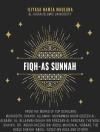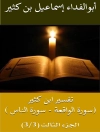A fully updated and revised edition of a classic text on Jewish prayer.
The power of prayer for spiritual renewal and personal transformation is at the core of all religious traditions. Because Hasidic literature contains no systematic manual of contemplative prayer, the texts included in this volume have been culled from many sources. From the teachings of the Hasidic Masters—the Ba’al Shem Tov, the Maggid Dov Baer of Meidzyrzec, and their immediate disciples—the editors have gleaned ‘hints as to the various rungs of inner prayer and how they are attained.’
Hasidism, the Jewish revivalist movement that began in the late eighteenth century, saw prayer as being at the heart of religious experience and was particularly concerned with the nature of a person’s relationship with God. The obstacles to prayer discussed by the Hasidic masters—distraction, loss of spirituality, and inconstancy of purpose—feel very close to concerns of our own age. Through advice, parables, and explanations, the Hasidic masters of the past speak to our own attempts to find meaning in prayer.
Giới thiệu về tác giả
Arthur Green, Ph D, is recognized as one of the world’s preeminent authorities on Jewish thought and spirituality. He is the Irving Brudnick professor of philosophy and religion at Hebrew College and rector of the Rabbinical School, which he founded in 2004. Professor emeritus at Brandeis University, he also taught at the University of Pennsylvania and the Reconstructionist Rabbinical College, where he served as dean and president.Dr. Green is author of several books including Judaism’s Ten Best Ideas: A Brief Guide for Seekers; Ehyeh: A Kabbalah for Tomorrow; Seek My Face: A Jewish Mystical Theology; Your Word Is Fire: The Hasidic Masters on Contemplative Prayer and Tormented Master: The Life and Spiritual Quest of Rabbi Nahman of Bratslav (all Jewish Lights). He is also author of Radical Judaism (Yale University Press) and coauthor of Speaking Torah: Spiritual Teachings from around the Maggid’s Table. He is long associated with the Havurah movement and a neo-Hasidic approach to Judaism.












